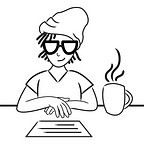I used to be a proud Canadian…
Recent discoveries of hundreds of unmarked graves of Indigenous children prove that Canada is not the “nice” country it claims to be.
CW: This story contains violent details of Canadian residential schools that some may find distressing.
I used to be a proud Canadian.
I was proud that, unlike our neighbours to the south, we Canadians have universal healthcare, legal same-sex marriage since 2005, and legal recreational marijuana nationwide since 2018, among other things. We hold doors open for people, apologize for our wrongdoings (sometimes to a fault), and have multiculturalism embedded in our law.
As a child of recent immigrants and a queer person of colour, I have honestly never felt as safe as I have in Canada.
Yet, this year, there have been calls to #CancelCanadaDay.
Because Canada’s greatest shame — a human rights violation lasting multiple generations with traumatic effects to this day—is finally being given the international attention it deserves.
When I saw the news story on the front page of BBC News, that 215 unmarked graves have been found on the site of a residential school in Kamloops, BC, I thought to myself, “Finally.”
So, instead of celebrating the founding of my country on this day, July 1, I’d like instead to spread some awareness about this historical truth.
What were Canadian residential schools?
Canadian residential schools were schools sponsored by the government and managed by Christian churches that Indigenous children were forced to attend. The purpose of these schools was to strip Indigenous children of their culture and identity, and to assimilate them into Canadian culture.
The last residential school was not closed until 1996. 150,000 children were estimated to have attended residential school.
What happened at Canadian residential schools?
Many, many atrocious things.
For one, not much actual schooling happened. Academics were often very basic. Instead, praying, manual labour, and domestic work took up much of the children’s days.
Students were separated from both their families and their identities. They were punished for speaking their native languages, had their hair cut short, their clothes taken away, and many experienced horrific abuse.
Abuse (and I feel another content warning is apt here) included severe punishment, sexual abuse and forced abortions, bathing with toxic chemicals, malnourishment and starvation, and being exposed to rampant disease with inadequate medical care.
What happened recently to renew interest in residential schools?
In late May, the remains of 215 children were found by the Tk’emlúps te Secwépemc First Nation on the site of a residential school in Kamloops, BC, my home province. Some children were as young as three.
Then, 751 unmarked graves were found by the Cowesses First Nation on the site of a residential school in Saskatchewan.
Just today (June 30) 182 more unmarked graves were discovered in Cranbrook, BC at a residential school site by the ʔaq̓am band.
I do not doubt that there will be more sombre discoveries to come. These findings surprised many Canadians who thought residential schools were a distant thing of the past, or underestimated their scope. (After all, we’re Canadians—aren’t we all nice?) But for folks who have worked in advocacy for years, these discoveries were not shocking at all.
What is the legacy of residential schools?
The original architects of the residential school system sought to assimilate Indigenous Peoples into mainstream Canadian society so that there would no longer be “an Indian problem” (the words of a former Deputy Minister of Indian Affairs).
But these architects instead created a much more heinous problem: a violation of human rights that some are calling a genocide. (A genocide that lasted several generations, mind you.)
The trauma from the residential schools continues to affect Indigenous communities in the present day. Things like poverty, violence, addiction, poorer health outcomes, and loss of language are disproportionately experienced by Indigenous communities.
What is #CancelCanadaDay?
After hundreds of unmarked graves were discovered on former residential school sites, many called for a cancellation of Canada Day. (Canada officially became an independent country on July 1, 1867).
As you may expect, there was a lot of handwringing in response to the call on social media to #CancelCanadaDay. Some people thought it was unpatriotic, or that survivors should just “get over it.”
To be clear, no government official has issued a decree to make July 1 no longer a statutory holiday nationwide.
My understanding of #CancelCanadaDay is not that the statutory holiday be abolished, but that this year’s Canada Day be one of sober contemplation. Instead of getting our faces painted red and white with a maple leaf for a nose, we should ask hard questions: What can we do to build a better country? How do we forge better relations with Indigenous communities, ones based on respect and equality? What are my personal responsibilities as a settler on this land we call Canada?
As a settler whose ancestors were not colonizers, I will honestly admit that talking about this tragedy is very uncomfortable. After all, as a child of immigrants, Canada was often seen as a safe haven and a land of opportunity for my family.
But I strongly believe that discomfort is no reason to avoid talking about this problem.
And yes, I do believe this is my problem too. Just because my ancestors didn’t commit this atrocity, doesn’t mean that I—a resident of the land we call Canada now—bear no responsibility.
As a settler, I benefit from colonial structures. Most of us do.
Therefore, it is our responsibility to work towards a better future for us and our Indigenous neighbours.
So, today, I will not be waving a flag, attending fireworks, or wearing red and white. I will be working through some tough stuff, and I hope other settlers will too.
